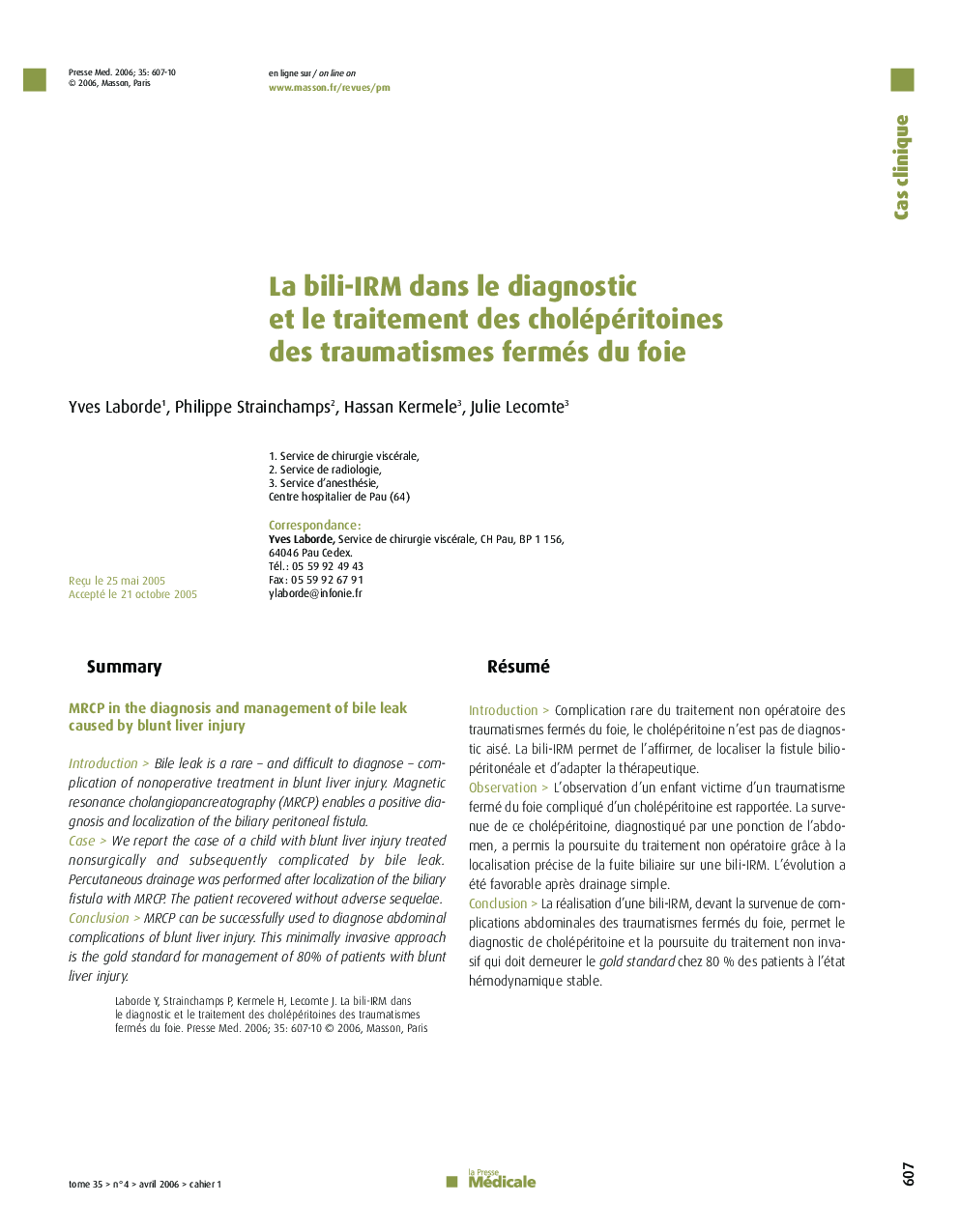| Article ID | Journal | Published Year | Pages | File Type |
|---|---|---|---|---|
| 3820370 | La Presse Médicale | 2006 | 4 Pages |
RésuméIntroductionComplication rare du traitement non opératoire des traumatismes fermés du foie, le cholépéritoine n’est pas de diagnostic aisé. La bili-IRM permet de l’affirmer, de localiser la fistule bilio-péritonéale et d’adapter la thérapeutique.ObservationL’observation d’un enfant victime d’un traumatisme fermé du foie compliqué d’un cholépéritoine est rapportée. La survenue de ce cholépéritoine, diagnostiqué par une ponction de l’abdomen, a permis la poursuite du traitement non opératoire grâce à la localisation précise de la fuite biliaire sur une bili-IRM. L’évolution a été favorable après drainage simple.ConclusionLa réalisation d’une bili-IRM, devant la survenue de complications abdominales des traumatismes fermés du foie, permet le diagnostic de cholépéritoine et la poursuite du traitement non invasif qui doit demeurer le gold standard chez 80 % des patients à l’état hémodynamique stable.
SummaryIntroductionBile leak is a rare - and difficult to diagnose - complication of nonoperative treatment in blunt liver injury. Magnetic resonance cholangiopancreatography (MRCP) enables a positive diagnosis and localization of the biliary peritoneal fistula.CaseWe report the case of a child with blunt liver injury treated nonsurgically and subsequently complicated by bile leak. Percutaneous drainage was performed after localization of the biliary fistula with MRCP. The patient recovered without adverse sequelae.ConclusionMRCP can be successfully used to diagnose abdominal complications of blunt liver injury. This minimally invasive approach is the gold standard for management of 80% of patients with blunt liver injury.
